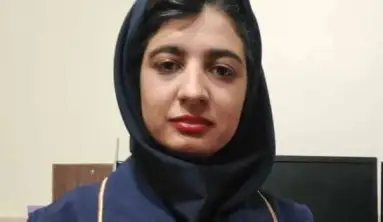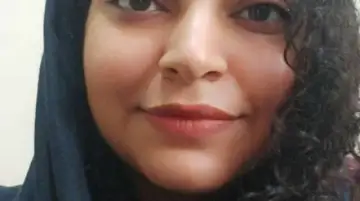
Museum rules accessible

Museum rules accessible
Museum rules accessible - Nasim KHorsandi
Accessible tourism expert in Safiran salam kavir
Freedom of travel is one of the fundamental human rights, and all humans hav the right to benefit from any kind of difference and restriction from the tourist sites and museums. This means that persons with disabilities as well as other individuals should be able to use these facilities. The importance of this issue can be seen in a statement to facilitate travel of tourists, approved by the General Assembly of the World Tourism Organization in the 2009 general assembly statement, which is based on facilitating the travel of persons with disabilities the essential pillar of tourism development policies. According to official statistics, there is about one billion people in the world, in other words, around 15 percent of the world’s population suffers from physical, cerebral or sensory problems. And in 2009, more than 730 million people over the age of 60 are equivalent to 10 % of the population of the older world. In the tourism debate, the availability of persons with disabilities helps a complete experience and pleasure in travelling because tourism is viewed as a growing phenomenon and consists of a complex system of activities and services that are closely related and are highly dependent on travel. Among these sites, museums enjoy a special place because the museum’s visit is not only a tourist activity but as a cultural activity for the inhabitants of the destination.
Therefore, owners or managers of museums and other cultural places have to provide conditions for understanding people in the environment as well as passing and reviewing. In this paper, we define the availability of a museum in an accessibility format. The triangle consists of three sides of a 1 - physical, 2 - physical 3 - cultural adaptations.
Physical adaptations:
The main condition of good and proper design is access. In other words, a museum building should be designed to take into account the needs of all users. ((design for all), or (global design). The design consists of seven principles. 1. Use for all: This type of design is applicable to all individuals with each type of disability. 2. Flexibility in use: It matches a broad range of preferences and aspirations of individuals. 3. Easy use: availability of facilities and facilities regardless of individual experiences, level of perception, language skills, and awareness. 4. To understand information and concepts: appropriate design of information is effectively transferred to the user without considering different conditions and sensory ability. 5. Error range: minimize random hazards and consequences and unintentional actions. 6. A minimum physical effort: facilities and facilities can be used easily and with minimal fatigue. 7. The size of the appropriate space to use: the design of the appropriate space in the sizes that the disabled user can use without the help of others. The global design for a museum building should be applied to various sections, including hand - to - hand passenger ticket positions, curator, museum input, entrance hall, main hall, and health service. Following are examples of global standards for the physical suitability of the museum: Ticket sales counters do not have a height difference with floor or street floor. * If possible for the blind to be installed in the course of the years and gallery openings. * Elevation above ground surface (cm) * the layout of the furniture should be provided that wheelchairs can be provided easily among them & museum items should be installed so that the person using the wheelchairs can easily look at them from seated positions . These items should be placed at maximum height of centimeters. Light in the exhibition areas should be increased in key locations to enjoy the exhibition by people with visual constraints. * Light in the exhibition spaces should be designed to reduce the reflection and reflection of light as much as possible. * Where the need is displayed horizontally, or to approach a book or to see a small object, the free space should exist at a height of 70 cm for the individual’s direct access
The Internet and web technology plays an important role in tourism and visiting cultural centers and museums that make a very large number of products and services available in different sectors, i.e., it should be designed so that everyone with different constraints can acquire it. In the following, the most important virtual adaptations that require a museum is available. • Ticket sites have the ability to read the page so that blind people can easily buy the ticket they want with independence • The information of the objects inside the museum can be described verbally with the help of the application. • Help apps for the deaf • If the museum building is a historical building and it is not possible to change it, you can use a clear clip with subtitles for people with physical disabilities.
Museum staff and staff play a very important role in reducing potential deficiencies in access or unforeseen problems and education. Educating and raising awareness about disability and the importance of honoring visitors can reduce barriers for people with disabilities.
Cultural adaptation:
Museum guides need to be aware of these needs and be able to address them. According to the 2006 United Nations Convention on the Rights of Persons with Disabilities, staff must be trained in the rights of persons with disabilities in order to provide better assistance, services, and supervision, and to explain how they function. Guides should also be able to communicate with people with sensory disabilities and should be able to provide information about mobility aids, technical equipment to people with disabilities, and if staff do not have experience with people with disabilities do not know how to approach them. Or be treated appropriately. Knowing the needs of people with the key to service them properly. But if the guides are not well prepared to provide them with the right services, the visitor›s needs will not be met, which will lead to their dissatisfaction. Today, the issue of education and disability in the field of tourism has been studied in many countries. And UN treaties and institutions such as the ADA in the United States, the DDA in the United Kingdom and Australia value training in this area.
Free download of the magazine
Museum rules accessible
Museum rules accessible
Museum rules accessible
Museum rules accessible
Museum rules accessible
مطالب مرتبط

Medical tourism
Medical tourism; from tourists’ motivations to the role of facilitators in destination choice Medical tourism - Sadaf Shahin poor Market...

Barriers of medical tourism development in Iran
Barriers of medical tourism development in Iran Barriers of medical tourism development in Iran - Dr. Samira Raoofi: Hospital admin...

Ivan Rendlic & IRAN
IRAN & IVAN Exclusive interview of SAFARNEVISAN E-Magazine with Ivan Rendlic, CEO of Rexoria Health Tourism Company, Croatia...


